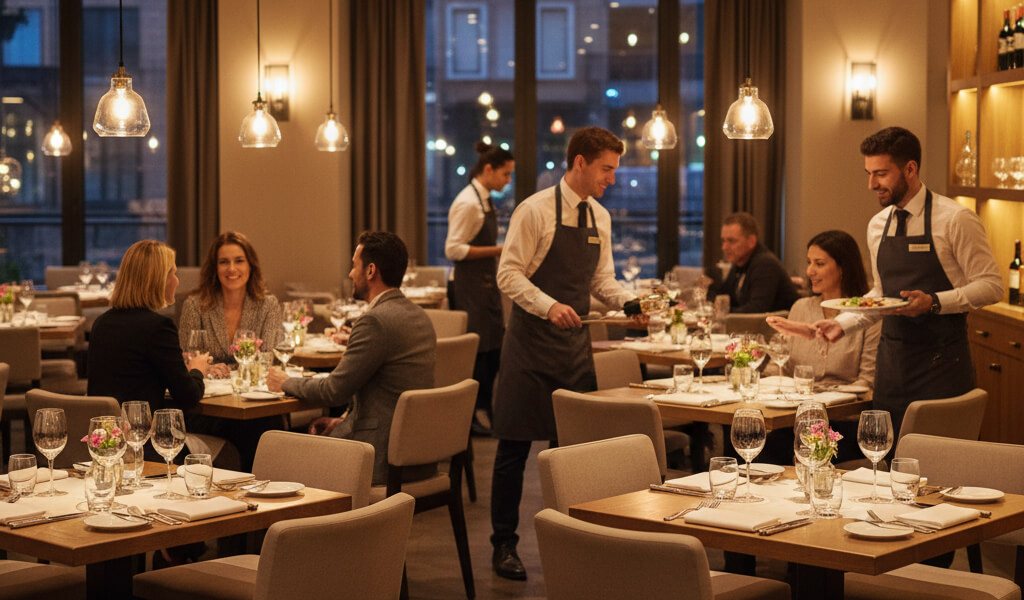October 06, 2025

In a world where smartphones dominate nearly every aspect of our lives, some restaurants are boldly asking guests to unplug. From upscale fine-dining rooms to cozy neighborhood spots, the concept of phone-free dining is gaining momentum—not as a gimmick, but as a thoughtful response to modern distractions.
But is asking guests to put down their phones good business? The answer, increasingly, is yes. This movement isn’t about being anti-technology; it’s about creating space for intentional, memorable, and high-value dining experiences—and using digital tools before and after the meal, not during it.
Smartphones are often the biggest barrier between guests and their meals. Notifications, photo-taking, and mindless scrolling can dilute what should be a sensory, engaging experience. In fact, research from Cornell University’s Food and Brand Lab shows that diners who are fully focused on their food report higher satisfaction, perceive meals as better-tasting, and are more likely to return.
Phone-free restaurants aren’t anti-tech—they’re pro-attention. When guests are asked to be present, they’re more likely to appreciate every detail: the aroma, plating, textures, and even the pacing of service. This kind of dining experience creates emotional connection, which ultimately fosters stronger loyalty and more enthusiastic word-of-mouth.
And for those worried about digital engagement, it’s not about removing it entirely. Instead, restaurants can ensure customers engage before or after the meal—through thoughtfully designed online menus, or through list-building strategies like email collection via your website. That way, you maintain a digital connection without compromising the in-person experience.
Dining out is—and has always been—a social ritual. Yet phones can interrupt the very human interactions that make restaurant visits memorable. A table full of friends scrolling in silence sends the wrong message, especially for restaurants trying to position themselves as warm, welcoming, and community-focused.
Studies, like those referenced in Psychology Today, confirm that the mere presence of phones at the table reduces empathy, weakens conversation, and undermines connection. Restaurants that minimize these distractions allow guests to reconnect with each other—something increasingly rare and valuable in today’s always-on culture.
Encouraging this kind of presence is also a smart business move, especially for small and independent restaurants. It creates memorable moments that guests share organically (after the meal, of course), fueling word-of-mouth and repeat visits. These grassroots outcomes align with low-cost, high-impact strategies found in article on guide to small-budget marketing.
There’s also a psychological dimension to going phone-free. When diners are fully immersed in the experience—undistracted by screens—they tend to view the meal as more intentional, premium, and exclusive. It’s no coincidence that some of the world’s most prestigious restaurants enforce no-phone policies or ask guests to keep devices in a pouch during service.
This increased focus can influence more than just taste. Studies show that present, engaged diners are more likely to leave generous tips, give glowing reviews, and remember the meal with higher emotional intensity. That kind of organic goodwill often leads to higher customer lifetime value and better digital traction through SEO and referrals.
If you're trying to build long-term visibility, pairing in-person quality with strong digital discoverability is key. That means creating content and web assets that convert local curiosity into real foot traffic—something explored in How Restaurants Can Attract Local Customers Through SEO.
It’s worth noting: banning phones doesn’t mean ditching tech. In fact, some of the best phone-free restaurants still rely heavily on digital tools behind the scenes—from kitchen efficiency to guest reservations.
The key is timing. Technology should serve the dining experience before or after the visit—not interrupt it. Online ordering systems, QR code menus, and digital reservation platforms all provide value while keeping the in-person experience focused. For example, collecting emails for newsletters or loyalty campaigns via your website—before the guest dines—keeps the digital relationship alive while respecting the atmosphere during the meal.
This balance is critical. It allows restaurants to maintain operational excellence while still offering a serene, undistracted environment once guests are seated. It’s not anti-technology; it’s pro-human.
Restaurants that implement this approach often see better feedback across both in-person and online channels—especially when paired with personalized loyalty strategies like those in article on customer retention guide.
One of the most underestimated benefits of phone-free dining is its post-meal marketing potential. By encouraging guests to engage fully during the experience, you’re making the meal more memorable—and more likely to be shared online afterward, when guests are ready to reflect and post.
Restaurants can capitalize on this by having well-placed signage or takeaway items that nudge guests toward your social channels or website after they’ve left. From newsletters and reservation systems to reviews and social follows, you can build long-term loyalty without ever having interrupted the in-person vibe.
Think of it this way: a phone-free meal today could become a Google review, tagged Instagram post, or referral tomorrow—all of which fuel your online presence and improve visibility. These micro-conversions all add up, especially when supported by foundational strategies like those in article on SEO playbook.
In a world addicted to distraction, offering a space where people can simply enjoy their food—and each other—is a powerful differentiator. Phone-free dining isn’t about banning technology; it’s about reclaiming attention, elevating the customer experience, and deepening emotional engagement with your brand.
When paired with smart digital tools like online menus, automated email campaigns, loyalty programs, and local SEO strategies, restaurants can build stronger relationships, both online and offline. And that’s the sweet spot in today’s hybrid hospitality world.
Stay up to date with the latest tips, expert insights, product reviews, and step-by-step guides to help you grow, create, and succeed—no matter your industry or passion.